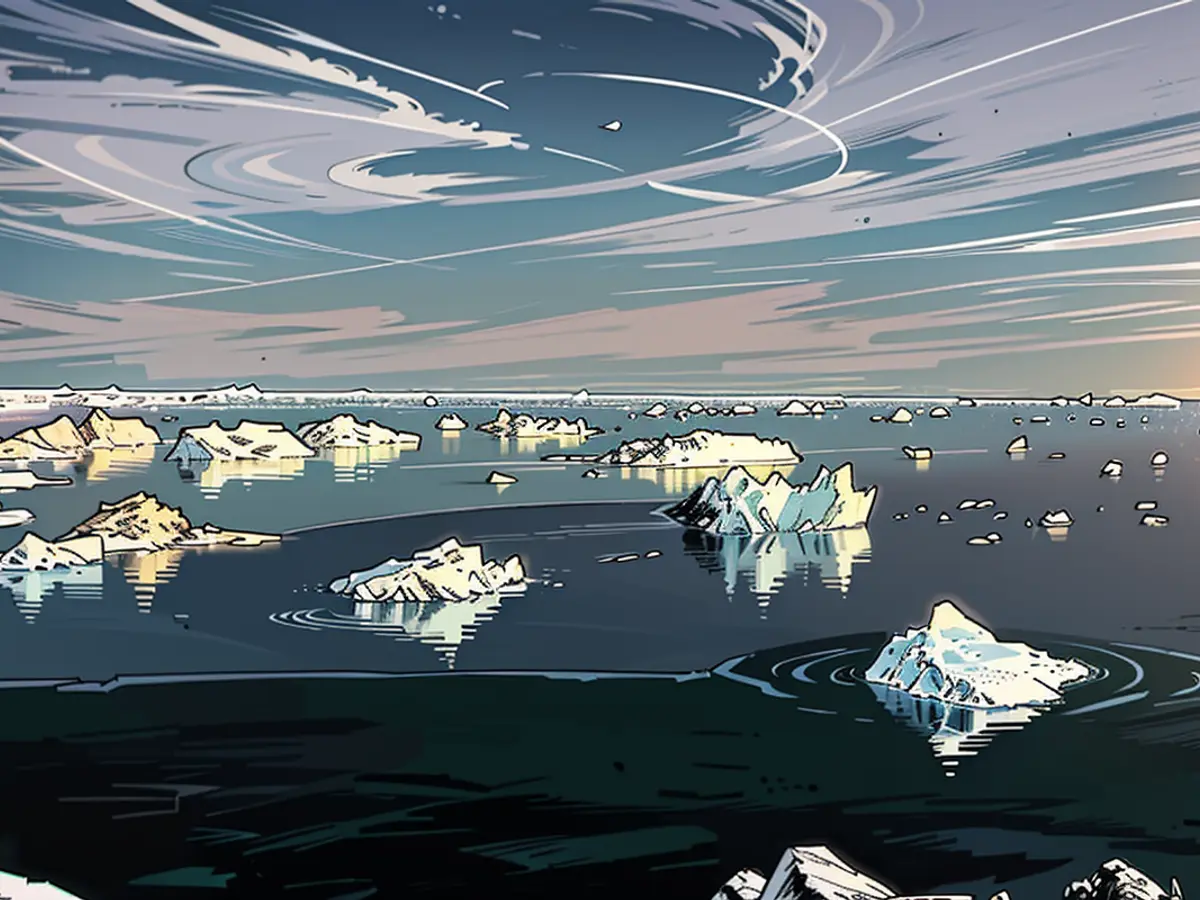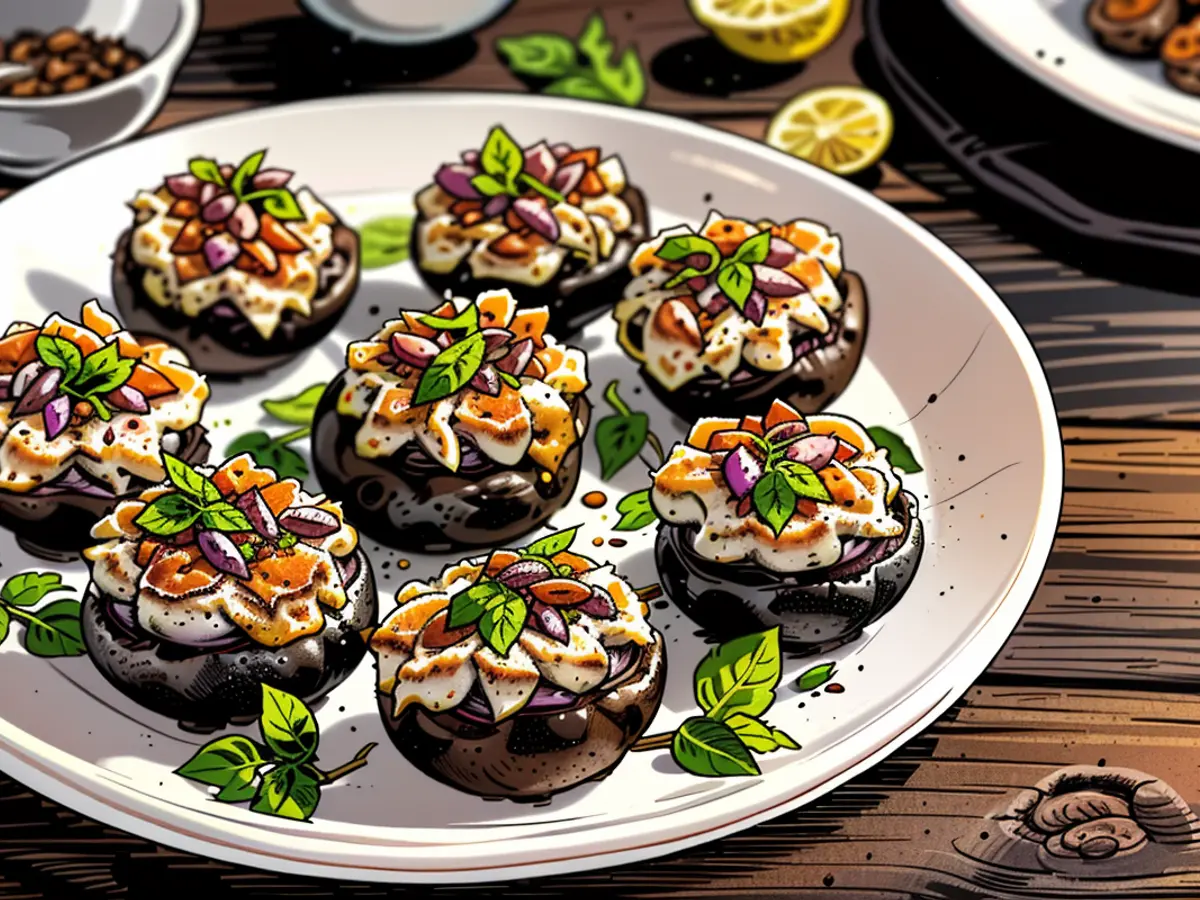coals in Greenland - Star-kitchen with Sugar-pipe and Walhaut: An evening at the most secluded restaurant in the world
The journey to the "Koks" restaurant is already an adventure. Since there is no road connection to Ilimanaq, a settlement on the west coast of Greenland, it can only be reached by boat. However, the water taxi has to find a new route through the labyrinth of icebergs every time it leaves from Ilulissat, where there is a runway for propeller machines. During the slalom ride, ice blocks from the melting Sermeq Kujalleq glacier constantly hit the boat hull.
Ilimanaq is a typical Greenlandic village with a red wooden church. Once it was a trading and missionary post during the early Danish colonial era. Only 55 people live here, 300 kilometers north of the Arctic Circle. There are no cars. In summer, unused snowmobiles are parked next to the colorful houses, and the tethered sled dogs doze in the sun.
At the harbor stand two of the most historic buildings in the entire country. They were built in the 17th century by Poul Egede, the son of the famous missionary Hans Egede. Poul was also the one who, due to his excellent language skills, created the first Greenlandic dictionary and later the first grammar and translated the Bible into Greenlandic in 1750.
The wooden houses were extensively renovated by the Danish association Realdania By & Byg starting in 2014. The old merchant's shop now serves as the reception for the Ilimanaq Lodge, and the upper floor as the "Egede" restaurant. The "Koks" moved into the neighboring house from 1751. This restaurant calls itself "the most remote restaurant in the world."
Taste distillation to the essentials
It is a dependency of "Koks" from the Faroe Islands, which closed due to new construction plans in 2019 and where Poul Andrias Ziska earned his second Michelin stars.
The move in 2022 to an even more remote region also changed the preparation and ingredients for the dishes. However, the apparent lack of fruit and vegetables in the high north has rather encouraged the creativity and courage of the kitchen team, as the dish "Sea cucumber with reindeer moss and fermented leek" shows.
Ingredients from Fjord and Fjell
At the 18 courses of the tasting menu, seafood is primarily used, from cod to lobster, mussels and seaweed, to whale fat. In preparation, old preservation techniques such as drying, fermenting, smoking, and salting are used, which give familiar ingredients a new flavor twist.
The tasting is served in small rooms at tables for up to six people, even upstairs in the former guest room of the Egede estate. The wine list is digital and is served on a tablet, listing unexpected treasures on almost 30 pages, even a white wine from the Catalan Priorat.
The effort in the kitchen for each course is noticeable to the guests in the required time: Up to six hours can stretch an evening at "Koks," the dishes are served on glass plates or ceramic tiles, sometimes prepared as aesthetic works of art.
"Fish, however, one should enjoy. "Vegan or vegetarian menus we do not offer, and requests for a fish- and shellfish-free menu we unfortunately cannot consider", it says hidden on the homepage. Only affluent tourists are found in "Koks" – and almost never locals.
Info: The third season of "Koks" in Ilimanaq lasts until September 7, 2024. The "Tasting Menu" costs 3200 Danish Crowns (430 Euro), 1800 Danish Crowns (240 Euro) for the seven-course wine pairing.
Sources: "Koks", "Visit Greenland"
Read also:
For this Michelin-star restaurant, gourmets even travel to the eternal ice
Frost, Fjords and Northern Lights: With the postal ship beyond the Polar Circle
The historic buildings at the harbor were built by Poul Egede, who also created the first Greenlandic dictionary and translated the Bible into Greenlandic in 1750. The "Koks" restaurant, known as "the most remote restaurant in the world," moved into one of these buildings in 2014.
The kitchen team at "Koks" has been encouraged by the apparent lack of fruit and vegetables in the high north, resulting in creative dishes like "Sea cucumber with reindeer moss and fermented leek."








